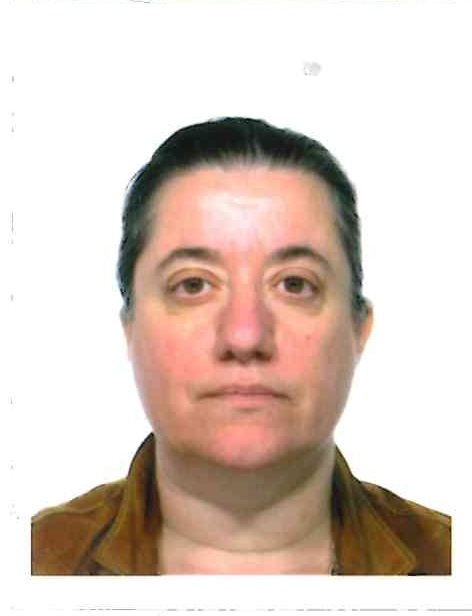Studying at the University of Verona
Here you can find information on the organisational aspects of the Programme, lecture timetables, learning activities and useful contact details for your time at the University, from enrolment to graduation.
Academic calendar
The academic calendar shows the deadlines and scheduled events that are relevant to students, teaching and technical-administrative staff of the University. Public holidays and University closures are also indicated. The academic year normally begins on 1 October each year and ends on 30 September of the following year.
Course calendar
The Academic Calendar sets out the degree programme lecture and exam timetables, as well as the relevant university closure dates..
| Period | From | To |
|---|---|---|
| 1° periodo di lezioni - 12 CFU | Sep 23, 2019 | Dec 14, 2019 |
| 1° periodo di lezioni | Sep 30, 2019 | Dec 14, 2019 |
| Periodo riservato ad eventuali recuperi di lezioni - dicembre 2019 | Dec 16, 2019 | Dec 17, 2019 |
| 2° periodo di lezioni - febbraio/aprile 2020 - 12 CFU | Feb 6, 2020 | Apr 6, 2020 |
| 2° periodo di lezioni - febbraio/aprile 2020 | Feb 10, 2020 | Apr 6, 2020 |
| 2° periodo di lezioni - aprile/maggio 2020 | Apr 15, 2020 | May 7, 2020 |
| 2° periodo di lezioni - aprile/maggio 2020 - 12 CFU | Apr 15, 2020 | May 12, 2020 |
| Periodo riservato ad eventuali recuperi di lezioni - maggio 2020 | May 8, 2020 | May 9, 2020 |
| Session | From | To |
|---|---|---|
| Sessione straordinaria - studenti f.c. e insegnamenti del 1° periodo | Dec 18, 2019 | Dec 23, 2019 |
| Sessione invernale - 1° appello | Jan 8, 2020 | Jan 17, 2020 |
| Sessione invernale - 2° appello | Jan 28, 2020 | Feb 6, 2020 |
| Sessione straordinaria - studenti f.c. - aprile 2020 | Apr 7, 2020 | Apr 9, 2020 |
| Sessione estiva - 3 appelli | May 12, 2020 | Jul 25, 2020 |
| Sessione autunnale - 1° appello | Aug 26, 2020 | Sep 5, 2020 |
| Sessione autunnale - 2° appello | Sep 21, 2020 | Sep 30, 2020 |
| Session | From | To |
|---|---|---|
| Sessione autunnale - ottobre 2019 | Oct 21, 2019 | Oct 22, 2019 |
| Sessione invernale - febbraio 2020 | Feb 7, 2020 | Feb 7, 2020 |
| Sessione invernale - marzo 2020 | Mar 18, 2020 | Mar 20, 2020 |
| Sessione estiva - giugno 2020 | Jun 25, 2020 | Jun 26, 2020 |
| Period | From | To |
|---|---|---|
| Festa di Ognissanti | Nov 1, 2019 | Nov 1, 2019 |
| Festa dell'Immacolata | Dec 8, 2019 | Dec 8, 2019 |
| Vacanze di Natale | Dec 24, 2019 | Jan 6, 2020 |
| Vacanze di Pasqua | Apr 10, 2020 | Apr 14, 2020 |
| Festa della Liberazione | Apr 25, 2020 | Apr 25, 2020 |
| Festa del lavoro | May 1, 2020 | May 1, 2020 |
| Festa del Santo Patrono | May 21, 2020 | May 21, 2020 |
| Festa della Repubblica | Jun 2, 2020 | Jun 2, 2020 |
Exam calendar
Exam dates and rounds are managed by the relevant Law Teaching and Student Services Unit.
To view all the exam sessions available, please use the Exam dashboard on ESSE3.
If you forgot your login details or have problems logging in, please contact the relevant IT HelpDesk, or check the login details recovery web page.
Should you have any doubts or questions, please check the Enrollment FAQs
Academic staff
 045 - 8425324
045 - 8425324

Dalla Massara Tommaso
 tommaso.dallamassara@univr.it
tommaso.dallamassara@univr.it
 +39 045 8028810
+39 045 8028810
 andrea.favaro@univr.it
andrea.favaro@univr.it
 sabrina.ferrazzi@univr.it
sabrina.ferrazzi@univr.it
 roberto.flor@univr.it
roberto.flor@univr.it
 stefano.gatti@univr.it
stefano.gatti@univr.it
 giorgia.guerra@univr.it
giorgia.guerra@univr.it
 rita.maggi@univr.it
rita.maggi@univr.it
 martina.menon@univr.it
martina.menon@univr.it
 mariafederica.merotto@univr.it
mariafederica.merotto@univr.it
 claudio.tomazzoli@univr.it
claudio.tomazzoli@univr.it
Study Plan
The Study Plan includes all modules, teaching and learning activities that each student will need to undertake during their time at the University.
Please select your Study Plan based on your enrollment year.
1° Year
| Modules | Credits | TAF | SSD |
|---|
Roman Law Institutions
History of Medieval and Modern Law
2° Year activated in the A.Y. 2020/2021
| Modules | Credits | TAF | SSD |
|---|
3° Year activated in the A.Y. 2021/2022
| Modules | Credits | TAF | SSD |
|---|
4° Year activated in the A.Y. 2022/2023
| Modules | Credits | TAF | SSD |
|---|
5° Year activated in the A.Y. 2023/2024
| Modules | Credits | TAF | SSD |
|---|
| Modules | Credits | TAF | SSD |
|---|
Roman Law Institutions
History of Medieval and Modern Law
| Modules | Credits | TAF | SSD |
|---|
| Modules | Credits | TAF | SSD |
|---|
| Modules | Credits | TAF | SSD |
|---|
| Modules | Credits | TAF | SSD |
|---|
| Modules | Credits | TAF | SSD |
|---|
Legend | Type of training activity (TTA)
TAF (Type of Educational Activity) All courses and activities are classified into different types of educational activities, indicated by a letter.
International Human Rights Law (2021/2022)
Teaching code
4S008459
Teacher
Coordinator
Credits
6
Also offered in courses:
- International law (advanced) of the course Combined Bachelor's + Master's degree in Law
Language
English
Scientific Disciplinary Sector (SSD)
IUS/13 - INTERNATIONAL LAW
Period
1° periodo lezioni (1A) dal Sep 16, 2021 al Oct 30, 2021.
Learning outcomes
The course is intended to provide students with the legal tools and methodologies necessary to analyse the international mechanisms of protection of human rights, established both in the UN framework and at European level, implementing a practice-oriented approach and selecting thematic areas of study. Upon completion of the course, students shall be able to understand the functioning of the international mechanisms of protection, also under a procedural perspective, and to deepen the study of specific rights referring to the relevant supranational case law.
Program
The course is devoted to the study of international - both universal and regional - human rights law, with a particular, but not exclusive focus on human rights protection in Europe.
The first - introductory and historical - part reconstructs origin and evolution of the movement for the international protection of human rights, also in the context of the other main branches of international law (international trade law and international investment law; the right to development and environmental protection; international humanitarian law and international criminal law, the prohibition of the use of force in international relations, etc.).
In the second part, the course examines the mechanisms for the protection of human rights in the context of the so-called United Nations System (which includes, alongside the United Nations, the Treaty Bodies and the Special Procedures).
The last part of the course examines regional protection mechanisms, with a particular focus on the European Convention on Human Rights, which has established the most sophisticated and successful regional system of human rights protection in the world.
TEACHING
The lessons, in compliance with the University guidelines, will be held in the presence AND in direct streaming via the Zoom link provided on the course's moodle page. The recording of each lesson will also be available on the course's moodle page.
The course is taught entirely in English. The teaching method combines lectures with class presentation and discussion of specific topics and cases on the basis of the materials made available on the moodle platform during the course.
Bibliography
Examination Methods
The examination aims at ascertaining the student's acquired capacity of legal analysis of relevant international treaties and cases.
ATTENDING STUDENTS shall prepare on their notes and the materials indicated during the course and made available on the moodle platform. As part of their final evaluation, they will be given the opportunity to prepare a class paper based on a case in-class presentation and/or a written essay.
STUDENTS WHO DO NOT ATTEND THE COURSE shall prepare on Antonio Marchesi, La tutela internazionale dei diritti umani, Torino, Giappichelli, 2021 - ONLY Chapters 1, 2, 3, 4 and 5.
The examination shall be in English for attending students (modalities to be agreed upon during the course). It shall be in Italian for non attending students (oral interview).
Type D and Type F activities
Le attività che consentono l’acquisizione dei crediti riservati alle attività formative a libera scelta dello studente (TAF D) sono le seguenti:
• Un insegnamento previsto nell’elenco delle attività formative (TAF D) allegato al piano didattico del corso di laurea Magistrale in Giurisprudenza;
• Un insegnamento attivato nei Corsi di studi afferenti al Collegio di Giurisprudenza;
• Un laboratorio didattico attivato nei Corsi di studi afferenti al Collegio di Giurisprudenza;
• Un laboratorio didattico attivato nei Corsi di studi afferenti al Dipartimento di Scienze Giuridiche;
• Un insegnamento previsto dall’Offerta Formativa di Ateneo, non impartito nell’ambito dei corsi di studi afferenti al Collegio di Giurisprudenza: il riconoscimento dei crediti acquisiti sarà subordinato alla preventiva presentazione di coerenti programmi formativi valutati dalla Commissione istruttoria per la didattica e approvati dal Collegio didattico.
• Attività formative organizzate dai singoli docenti del Collegio di Giurisprudenza o del Dipartimento di Scienze Giuridiche: previa approvazione del Collegio ad esse verrà attribuito, dopo un’apposita verifica, un credito per ogni 6 ore di frequenza obbligatoria;
• Attività formative che implicano la partecipazione a convegni o seminari organizzati sotto il “logo” del Dipartimento di Scienze Giuridiche o dell’Ateneo: devono essere preventivamente approvate dal Collegio di Giurisprudenza indicando un docente di riferimento del Collegio di Giurisprudenza ovvero del Dipartimento di Scienze Giuridiche. Un credito per ogni giornata di convegno o di seminario si acquisisce dopo apposita verifica che dimostri l’avvenuta fruizione culturale del tema del convegno o del seminario.
Le attività che consentono l’acquisizione dei crediti riservati alle ulteriori attività formative (TAF F) sono le seguenti:
• Informatica (3 cfu)
• Stage;
• Un laboratorio didattico attivato nei Corsi di studi afferenti al Collegio di Giurisprudenza;
• Un laboratorio didattico attivato nei Corsi di studi afferenti al Dipartimento di Scienze Giuridiche.
Al link https://www.univr.it/it/i-nostri-servizi/segreterie-studenti/giurisprudenza#categdoc_7103 la modulistica per l'inserimento di attività non selezionabili in autonomia dallo studente in sede di compilazione del piano degli studi.
| years | Modules | TAF | Teacher |
|---|---|---|---|
| 4° 5° | THE PRESENT AND THE FUTURE OF THE PLANET. ECOLOGY, SUSTAINABILITY, POLICIES | D |
Laura Calafà
(Coordinator)
|
| 4° 5° | Univero’ 2019 | D |
Tommaso Dalla Massara
(Coordinator)
|
Career prospects
Module/Programme news
News for students
There you will find information, resources and services useful during your time at the University (Student’s exam record, your study plan on ESSE3, Distance Learning courses, university email account, office forms, administrative procedures, etc.). You can log into MyUnivr with your GIA login details: only in this way will you be able to receive notification of all the notices from your teachers and your secretariat via email and soon also via the Univr app.
Language skills
Graduation
Internships
Internships are aimed at enabling students to gain direct knowledge of the world of work and to acquire specific professional skills.
Internships are carried out under the responsibility of an individual lecturer, and can be carried out in professional firms, public administration bodies and companies recognised by the University of Verona.
Any CFU credits gained by doing internships will be recognised and recorded by the University in accordance with the relevant University regulations in force (Regolamento d’Ateneo per il riconoscimento dei crediti maturati negli stage universitari).
For further information on internships, please go to: https://www.univr.it/it/i-nostri-servizi/stage-e-tirocini.


















































